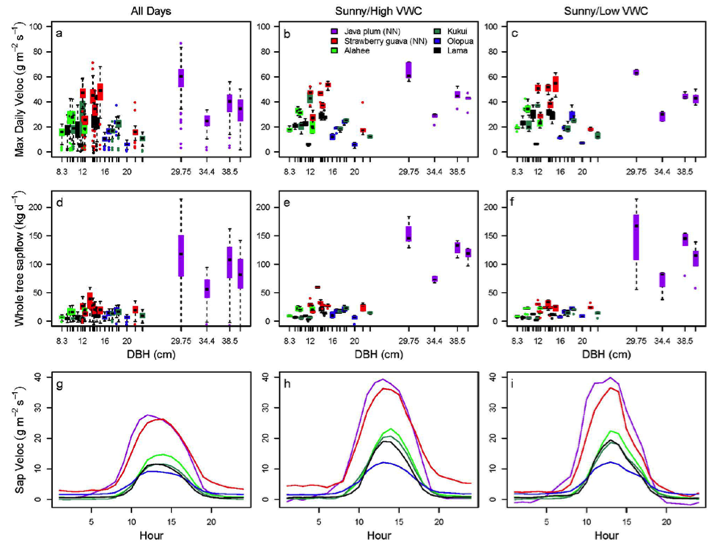
SPONSOR:
Honolulu Board of Water Supply
PROJECT PERIOD:
06/06/18 – 06/04/21
ABSTRACT:
The goal of this project is to improve understanding of the transpiration characteristics of native and non-native plants at a site representative of wet forests in the leeward Ko‘olau mountains. This study complements our recently completed field study at a site in Mākaha Valley. While the Mākaha study compared transpiration for native and non-native trees in a mesic environment, this project observes transpiration differences in a wetter climate. The specific objectives are to (1) determine the rates of transpiration in selected native and non-native species occurring in a leeward Ko‘olau forest; (2) determine the gas exchange characteristics of those native and non-native plants; (3) quantify the effects of varying environmental conditions, such as light level, humidity, soil moisture, and canopy wetness, on gas exchange in those plants; and (4) provide an assessment of the general effects of non-native plants on water resources in wet forest environments on O‘ahu.
Project Publication:
Kagawa-Viviani, A., Miyazawa, Y., Nullet, M., and Giambelluca, T. In preparation. Ecohydrologic engineering contributes to the success of a pantropical woody invader.
PRINCIPAL INVESTIGATOR
